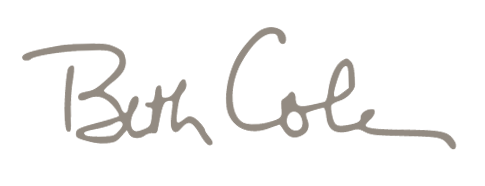Painting With Oils - Part Three
/Going Home | ©Beth Cole | Oil on Canvas | 11 x 14
This is the third in a series on painting with oil, what I have learned so far. You can read the first post here, and the second one here.
Choosing Your Surface
Stretched canvas or canvas panels have been my go to painting surface for most of my painting time with oil. I like this option because both are affordable and easy to find at Hobby Lobby or wherever.
Lately, I have experimented with cradled birch panels and gessoed MDF panels and have found both to be wonderful options.
To prepare the MDF board (available at Blick), I apply gesso with a bigger brush using horizontal strokes for one coat, letting that dry, then vertical strokes for the next coat and letting it dry. Sometimes I add a little yellow ochre to the gesso to warm it up, you can do whatever you like
The same process works for a cradled birch panel. What I love about painting on these panels is they are finished as they are, they don’t need to be framed, and they are very sturdy and nice to handle. Sometimes with stretched canvas, the surface has a little give to it and once you have started painting on a solid surface, it’s hard to go back.
Another option for a surface is linen or canvas on gatorboard. I have just ordered my first linen on gatorboard so I don’t have any experience yet, but I will let you know what I think. Many fine artists use this method and I haven’t yet because of the expense. But I’m ready to give it a go.
When I am starting a painting, I will usually do a small thumbnail value study using grayscale Tombow markers (black, cool gray N65 and N75). I then use this value study to do a small 8 x 10 color study.
Before I start the painting, I use mineral spirits to create very thin paint and use that to give the whole board a gentle wash as an under painting.
A Gessoed MDF Panel with an Underpainting Wash
Next comes sketching in, I’ll write about this and applying paint, fat over lean, in the next post. Thanks for following along.
-- Beth



